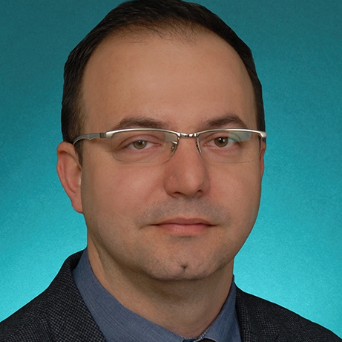
Tome Dimovski
Work place: “St. Kliment Ohridski” University – Bitola Faculty of information and communication technologies, Bitola, R. Macedonia
E-mail: tome.dimovski@fikt.edu.mk
Website:
Research Interests: Computer systems and computational processes, Computer Architecture and Organization, Computer Networks, Distributed Computing, Social Information Systems
Biography
Tome Dimovski received his BSc and MSc degrees from the Technical University – Gabrovo, Bulgaria, in 2004 and 2005, respectively. He received his PhD degrees from the Faculty of Technical Sciences, “St. Kliment Ohridski” University in Bitola, R. Macedonia in 2013. His current position is Associate professor at the Faculty of information and communication technologies, St. Kliment Ohridski University in Bitola, R. Macedonia. His research interests include Information Systems, Distributed Databases, Computer Networks and Mobile Computing.
Author Articles
On the Technologies and Systems for Student Attendance Tracking
By Zoran Kotevski Natasa Blazheska-Tabakovska Andrijana Bocevska Tome Dimovski
DOI: https://doi.org/10.5815/ijitcs.2018.10.06, Pub. Date: 8 Oct. 2018
Manual student attendance tracking, by calling student names from a check list or taking students’ signs on a paper, has gone into history. Nowadays, modern technologies have already enabled the development of various automatized attendance tracking systems. These technologies include: Radio-Frequency Identification (RFID), Biometric (fingerprint, face or voice recognition), Barcode identification and Bluetooth communication technologies, that are implemented over an IP infrastructure as a platform. But, all these technologies perform in a different manner and exhibit certain functional limitations considering the given implementation. The main motivation for this research was to explore the possibilities for overcoming the issues of current systems for attendance tracking, considering the limitations of the technologies employed. Hence, the core contribution of this research can be considered as a fourfold, i.e. i) it presents the most frequently used technologies in the development of attendance tracking systems, ii) it reviews a range of existing student attendance tracking systems, iii) it defines criteria for performance evaluation of the technologies employed in student attendance tracking, from a perspective of educational institutions, and iv) it evaluates the mostly used technologies according to the predefined functional criteria. As a summary of the evaluation it provides directions for future development of a student attendance tracking system that would address the explored issues and functional limitations.
[...] Read more.Other Articles
Subscribe to receive issue release notifications and newsletters from MECS Press journals